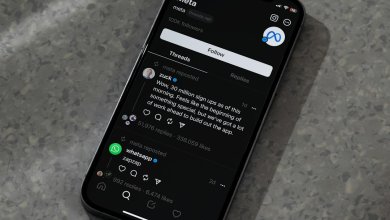B2B Programmatic Advertising: Essential Strategies 2025
As the business landscape continues to evolve, B2B programmatic advertising is establishing itself as a cornerstone of modern marketing strategy. With the proliferation of data, enhanced AI capabilities, and the increasing demand for real-time personalization, B2B marketers must embrace cutting-edge tactics to remain competitive in 2025. Programmatic advertising offers unparalleled efficiency and targeting at scale, but it demands a strategic approach informed by industry trends and technological advancements.
Understanding the B2B Programmatic Landscape
Unlike B2C marketing, where purchase decisions are more emotional and short-cycle, B2B transactions are often rational, involve multiple stakeholders, and come with extended decision-making periods. This makes precision-targeted campaigns through programmatic channels even more critical. The use of automated bidding systems and advanced audience segmentation enables businesses to reach decision-makers at the right moment and on the right platform.
[ai-img]business meeting, digital marketing dashboard, charts[/ai-img]Key Strategies for B2B Programmatic Success in 2025
1. Prioritize Data Quality and Enrichment
Data is the fuel that powers programmatic engines. Inaccurate or incomplete data can lead to wasted ad spend and missed opportunities. In 2025, the use of enriched first-party data, intelligent segmentation, and robust data hygiene practices will be non-negotiable. B2B marketers must:
- Integrate CRM, website, and behavioral data to build comprehensive buyer personas.
- Employ AI-driven insights to anticipate buyer intent and adjust messaging.
- Partner with reputable data providers to expand reach while maintaining accuracy.
2. Invest in Contextual Targeting and Privacy-First Techniques
With stricter regulations such as GDPR and the deprecation of third-party cookies, privacy-first marketing is more critical than ever. Contextual targeting—serving ads based on page content rather than user data—is emerging as a powerful tool for B2B marketers. Incorporating AI to interpret semantic meaning allows marketers to place messages in the most relevant environments, ensuring both compliance and performance.
3. Optimize Cross-Channel Orchestration
2025 demands a seamless experience across display, video, CTV, native, and audio platforms. B2B buyers often engage through a myriad of touchpoints before deciding, and programmatic platforms must adapt. To ensure alignment:
- Use unified campaign management systems that track user interactions across devices and formats.
- Develop creative assets tailored to different channels yet aligned to a core message.
- Apply frequency capping and sequencing to guide users through the funnel optimally.
4. Leverage Account-Based Marketing (ABM) Integration
ABM has become indispensable in B2B, and integrating it into your programmatic framework makes campaign execution more focused and effective. By combining ABM with programmatic, marketers can serve personalized advertising to specific companies or roles.
Advanced programmatic platforms now offer:
- Granular company targeting through IP addresses and third-party firmographic data.
- Real-time behavioral tracking to pivot messages based on account engagement.
- Closed-loop reporting for measuring influence on pipeline and revenue.
5. Focus on Creative Intelligence
While targeting and automation get much of the spotlight, creative relevance remains a key determinant of performance. In 2025, B2B creative will need to evolve alongside sophisticated delivery mechanisms. Use dynamic creative optimization (DCO) to change messages based on:
- Industry and job role
- Customer journey stage
- Intent signals and past interactions
Testing different creative elements and employing heatmaps and engagement scores can significantly refine messaging.
Challenges to Anticipate
Despite its benefits, B2B programmatic advertising is not without challenges. These include:
- Ad fraud and brand safety — It’s vital to invest in verified inventory through trusted exchanges and utilize fraud prevention tools.
- Complex sales cycles — Attribution models must be adapted to track multiple touchpoints over time, sometimes months or years.
- Internal skill gaps — Building or training an internal team that understands both programmatic media and B2B complexities is essential.
Looking Ahead
To thrive in the 2025 digital ecosystem, B2B organizations must move beyond standard display ads towards integrated, data-rich, and persona-literate campaigns. Programmatic solutions will continue to expand their capabilities in AI, predictive analytics, and omnichannel delivery, making it imperative that marketers remain agile and informed.
By committing to strategic data use, privacy-conscious targeting, and account-based execution, B2B brands can unlock the full potential of programmatic advertising and create meaningful engagement with today’s evolving buyer committees.



